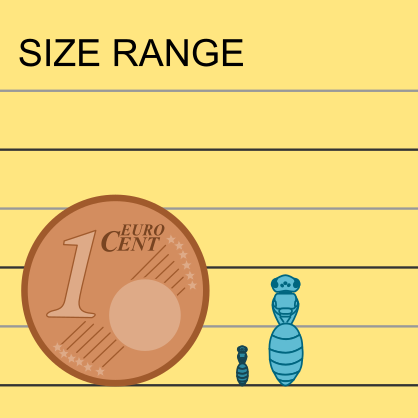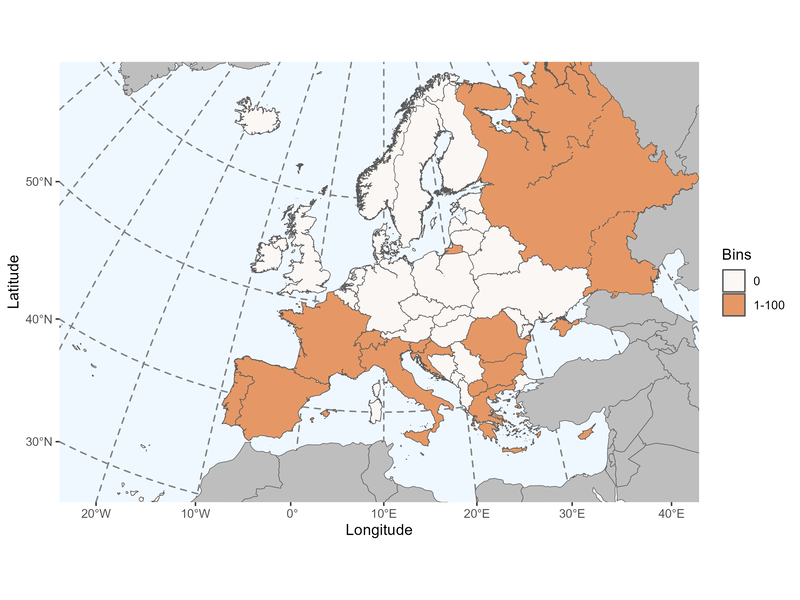Author: Ducke, 1900
|
Type species: Heriades glutinosus Giraud, 1871, by designation of Michener, 1943: 86 and Sandhouse, 1943: 592.
Subgenera: Chelostomopsis Cockerell, 1925, Nanosmia Griswold, 1998, Protosmia s.str. Ducke, 1900. Synonyms: Raphidostoma Cockerell, 1936; Anthocopa (Rhodosmia) Michener, 1943 |
Clade: Anthophila
Family: Megachilidae SubF: Megachilinae Tribe: Osmiini |
|
Distinctive traits
|
Pictures of distinctive traits.
|
Morphologically close genera and how to distinguish them
Chelostoma species have a propodeal triangle equal or longer than the metanotum. Females have a no apical brush on the labrum. Males have visible T7 under T6.
Hofferia species have no long hairs at the apex of the labrum.
Heriades & Stenoheriades species have only a vestigial propodeal triangle, but do have a transverse carina on the T1.
Haetosmia species have a strongly carinate pronotal lobe and a wide basitarsus on anterior legs.
Osmia & Hoplitis species have a vestigial propodeal triangle, a stout body-shape and dense hairs on the mesothorax.
- Protosmia - Chelostoma
Chelostoma species have a propodeal triangle equal or longer than the metanotum. Females have a no apical brush on the labrum. Males have visible T7 under T6.
- Protosmia - Hofferia
Hofferia species have no long hairs at the apex of the labrum.
- Protosmia - Heriades & Stenoheriades
Heriades & Stenoheriades species have only a vestigial propodeal triangle, but do have a transverse carina on the T1.
- Protosmia - Haetosmia
Haetosmia species have a strongly carinate pronotal lobe and a wide basitarsus on anterior legs.
- Protosmia - Osmia & Hoplitis
Osmia & Hoplitis species have a vestigial propodeal triangle, a stout body-shape and dense hairs on the mesothorax.
General comments on Protosmia species identification
Species can be distinguished based on lateral ornaments on metasomal tergites and mandible characters, easier to see when mandibles are open.
Species can be distinguished based on lateral ornaments on metasomal tergites and mandible characters, easier to see when mandibles are open.
Sorry, but the species identification tool is not yet available for Protosmia.
Please check the reference(s) below for traditional keys.
Please check the reference(s) below for traditional keys.
List of the 13 Protosmia species found in Europe (Ghisbain et al. 2023):
Protosmia (Chelostomopsis) capitata (Schletterer, 1889)
Protosmia (Chelostomopsis) longiceps (Friese, 1899)
Protosmia (Nanosmia) asensioi Griswold & Parker, 1988
Protosmia (Nanosmia) minutula (Pérez, 1896)
Protosmia (Nanosmia) montana Müller, 2012
Protosmia (Protosmia) exenterata (Pérez, 1895)
Protosmia (Protosmia) glutinosa (Giraud, 1871)
Protosmia (Protosmia) lusitanica Le Goff & Gonçalves, 2018
Protosmia (Protosmia) monstrosa (Pérez, 1895)
Protosmia (Protosmia) paradoxa (Friese, 1899)
Protosmia (Protosmia) sideritis Tkalců, 1978
Protosmia (Protosmia) tauricola Popov, 1961
Protosmia (Protosmia) tiflensis (Morawitz, 1876)
Protosmia (Chelostomopsis) capitata (Schletterer, 1889)
Protosmia (Chelostomopsis) longiceps (Friese, 1899)
Protosmia (Nanosmia) asensioi Griswold & Parker, 1988
Protosmia (Nanosmia) minutula (Pérez, 1896)
Protosmia (Nanosmia) montana Müller, 2012
Protosmia (Protosmia) exenterata (Pérez, 1895)
Protosmia (Protosmia) glutinosa (Giraud, 1871)
Protosmia (Protosmia) lusitanica Le Goff & Gonçalves, 2018
Protosmia (Protosmia) monstrosa (Pérez, 1895)
Protosmia (Protosmia) paradoxa (Friese, 1899)
Protosmia (Protosmia) sideritis Tkalců, 1978
Protosmia (Protosmia) tauricola Popov, 1961
Protosmia (Protosmia) tiflensis (Morawitz, 1876)
References with identification keys for some of the species:
- Müller A. 2017. Palaearctic Protosmia bees of the subgenus Chelostomopsis (Megachilidae, Osmiini): biology, taxonomy and key to species. Zootaxa, 4227(2): 287-294.
Online resources:
Palearctic Osmiine Bees (Palearctic)
Exotic Bee ID (World)
Discover Life (World)
WestPalBees (West Palearctic)
Palearctic Osmiine Bees (Palearctic)
Exotic Bee ID (World)
Discover Life (World)
WestPalBees (West Palearctic)
Page contributors:
You noticed a mistake? You have a suggestion to improve this page?
Don't keep it to yourself, please contact us and become a contributor to IDmyBee!
- Adrien Perrard (Dec. 2023)
- Adrien Perrard (Dec. 2019)
You noticed a mistake? You have a suggestion to improve this page?
Don't keep it to yourself, please contact us and become a contributor to IDmyBee!
References used to write this page:
- Ghisbain, G., Rosa, P., Bogusch, P., Flaminio, S., Le Divelec, R., Dorchin, A., Kasparek, M., Kuhlmann, M., Litman, J., Mignot, M., Müller, A., Praz, C., Radchenko, V.G., Rasmont, P., Risch, S., Roberts, S.P.M., Smit, J., Wood, T.J., Michez, D. & Reverte, S. (2023). The new annotated checklist of the wild bees of Europe (Hymenoptera: Anthophila). Zootaxa, 5327(1), 1-147.
- Michener, C.D. 2007. The Bees of the World, 2nd Edition. The John Hopkins University Press, Baltimore.
- Michez D., Rasmont P., Terzo, M., Vereecken, N. 2019. Abeilles d'Europes. Hymenoptères d'Europes, Volume 1. N.A.P. Editions.
- Nieto, A., Roberts, S. P., Kemp, J., Rasmont, P., Kuhlmann, M., García Criado, M., ... & Michez, D. 2014. European red list of bees. Luxembourg: Publication Office of the European Union, 98.
- Rasmont, P., Devalez, Jelle, Pauly, A., Michez, D. & Radchenko, V.G. 2017. Addition to the checklist of IUCN European wild bees (Hymenoptera: Apoidea). Annales de la Société entomologique de France 53: 17-32.



